By now we had settled into a routine at our residence at Connelles. A continental breakfast in the Hotel which is more than adequate with our freshly made croissants that we order each night: all part of our package. generally, we catch up with others and either continue our chat we initiated last evening or talk about our day’s plan. Some good advice is exchanged: we also get to speak to those from other parts of the world and their views on political and other issues.
We were sort of focussing on (relatively) a local area today. As noted Connelles is a long way from many of the areas which interested us: a typical day would involve at least 3 hours in the car. Today we will break that mould and spend a couple of hours.
Our trip was planned to be mainly rural: passing through those typical French villages we often see on La Tour de France. Indeed we will actually travel along some of the 2018 “track”. Fretteville and Dauberf are 2 villages we travelled via. The former is “typical”: narrow winding streets where the locals stop and look as you drive by, as they feel that you have probably lost your way seeing your travelling through.
Villages are clustered houses, small in nature and primarily made from stone which would have been quarried from the local fields or nearby. Very little evidence of any new dwellings: perhaps they may not be allowed ?
Surrounding these villages are the fields in which mainly canola is grown. Well cultivated and spacious green and expansive fields. With the advent of spring, I find it rather surprising that the crops seem so well advanced: many needing to be harvested.
Along our way, we stopped at another of these French villages, Ecouis. Centrally located is the cathedral: we peer into this and are amazed that this building traces its history back to the early 1500s. Some of the contents still in the same original state. It was here that we met some of the others staying at our residence. They were with one of the locals who had an extensive knowledge of this location. Renaissance period architecture and art. Wow, something approximately 500 years old. The locals talk of this normal, I find this a little hard to comprehend.
captain Cook wasn’t even thought of by the Renaissance period !! Indeed some of the some inlays on the floor apparently were dated back to 1313AD !! There was a plaque indicating that Richard the Lionheart’s heart was entombed in the wall here. Apparently, such people used to spread their remains around post death. We visit his castle later today.
Ecouis was a but of a hub: slightly larger than the others to which I have referred. Traffic quite regular through the narrow cobbled stone street, creating lots of noise. Newer houses confined to the outer edges of town.
In each village (regardless of size), a central meeting place (“Mairie”) is located. These are quite distinctively designed: seemingly common to all places we have been through (I have included a picture n the photo gallery). It appears at these points all the local meetings and information is posted and discussed. These places are often “manned” in the larger villages and small towns. The keys to the cathedral in Ecouis had to be secured to open the cathedral noted above.
From Ecouis we travelled some 9 kilometres to what is nationally known as “one of the most picturesque villages in all of France:” Lyon de Fortet.
Settled at the bottom of a small valley, with a small rivulet running through its centre with the compulsory cobbled stone streets and very old buildings (one we saw was built in 1621).
“Perhaps we were a little early to see it at its best”, remarked Fred. I indicated to her that it was late morning and that we could come back in the afternoon if she preferred, although it would have meant some extra driving. Summarily dismissed, was I !! Just endeavouring to help out.
Housed in the village was the house of Ravel (the classical composer), a war memorial that had both World War I and II significance. General De Gaulle also had some significance to the village however, the sign had too many spelling mistakes for us to decipher. Flowers (mainly tulips) were starting to make their presence. As we had come to expect, the centre of the village was a square. This housing the small farmers’ market that was unfolding.
The village patisserie housing some delicate chocolates and cakes: after close examination and some deep consideration, we decided to buy a baguette roll. This would be utilised for our planned picnic later. Cafe Richard supplied us with our “deux caffe, Americano sil vous plait”. The barista couldn’t understand my Aussie accent and so delivered deux espresso: not bad really if you’re wanting a teaspoon of caffe !! I generally like a little more than that.
A local tourist guide stopped and chatted with us: obviously noted our deep and meaningful conversation in English: she was waiting for a bus of Spaniards to arrive. How was a tourist bus going to fit down these narrow streets ? Added to this, traffic just stops and chats holding up the one way passages. Refusing to move even though the “get out of my way”, toot occurs. A local taxi stopped next to our table perched on a very narrow footpath, coaxed the shop keeper out for a chat, even though he was holding up traffic. “Is this normal, being rude or just self-centred ?”, I enquired of Fred.
She pronounced, “all three, I guess”.
Still no damage done, except the “puffing billy” cabbie, blowing smoke all over us: not over the caffe, as it went a long time ago !! The bus arrived and slowly made its way down the Rue. We moved on from here, detouring to the very old Benedictine Abbaye de Mortomers (13th century), which was house deep into a forest. Just a quick photo and onto a small hamlet just down the road, Lisor.
Picture a small dam, ducks quacking away, a grassy knoll with picnic table all positioned next to a very narrow country road. Just across the dam, were a few large Chateaux (see, I can spell the plural of Chateau). It was here that Fred and I chose to break bread.
“There is no need to break the bread”, Fred remarked as I started to use my brute strength and rip it apart. “Use the knife in the picnic basket, much more civilised”, I was reminded. Can’t work it out, one minute a question about “should we break bread here ?“, then only some minutes later, a change of culinary procedure.
The ducks’ behaviour seemed to suggest “it was mating season”, Fred observed.
“No way I indicated, they are being aggressive toward each other: mates don’t treat each other like this”, I replied.Besides, what if you had more than 8 mates ? You would have to run a semi-final series etc !! I didn’t pursue this: Fred had to be wrong with this one !!
Lunch, was the normal with cheese and meats, yes all washed down with water this time. I guess you were expecting, “wine”. We do show restraint occasionally.
We left Lisor and headed for Chateau Gauillard at nearby Les Andeleys. This was Richard the Lionheart’s Castle: perched high on the cliffs of the Seine River in the middle of a meander. Hence, he could see invaders coming down as well as up the river. Massive views from here. The castle is in a semi ruined state, but good enough to imagine the size and configuration from the elevated view we had. No need to climb down the steep paths and walk around, as we could see all from where we were.
Impressive: all made from the white rock from the very steep vertical cliffs nearby.
From this vantage point, we could see the general location of our residence at Connelles.
The latter having quite vertical white cliffs. We knew that we weren’t too far away from home and so, pin-pointed the location. These cliffs provide rock climbers with some “fields in which to play”. When driving locally around Connelles, we would often see rock climbers ascending or descending using ropes. We were so close to these cliffs, that I said to Fred, “we should invite one of then to drop in”.
From our Chateau Gauillard vantage point, the town of Les Andeleys was immediately below us: another impressive sight. Built right on the Seine River with tall steeples from churches and narrow streets. “Very European: French actually”, I noted to Fred. “That’s surprising”, she replied. Just another brilliant observation that I have offered to our trip. Isn’t it amazing the amount of information and observational traits some people possess ?
Our trip home via a rather panoramic view from the south (after avoiding a number of cyclists climbing the steep incline) and through some small villages high on the ridge above Connelles, was relatively short
Back at home, our dinner was a cooked French one, all washed down with, yes, wine.
Our Chateau de Marsannay Clos De Jux (Pinot Noir) that we purchased at Bourgogyne was the target. Great food and wine: 2014 nonetheless. Long single piece of cork extracted from the bottle: showing (by Australian standards), that this was a premium wine. Our meal was completed with some ancillary nibbling on the leftover # Normandie cheeses I rescued from our Honfleur lunch yesterday. Fred seemed to be impressed: “very nice (as opposed to Nice), almost as good as Parramatta winning a premiership”, she said. I was impressed as I thought she had lost her long term memory !!
Sunset occurs at about 21.30 hours now, so you usually eat late. Sitting either on one of our balconies (we indeed have 2), or just inside peering out at the. Seine River, is a little hard to beat.
The ducks outside displaying the same behaviour as the ones at Lisor: they couldn’t have had the same mates, perhaps they were cousins ?
Generally at this hour, we start listening to Australian radio and pick up the world news from the Eastern Hemisphere evening.
Australia is currently in the grip of an election: something Fred and I aren’t missing all that much. The BBC and France 24 television news channels keep us up to date. Currently a large preoccupation of airtime being spent on the horrific fire at the Paris Notre Dame.
The night ( European time), that the fire started we were glued to the TV sets until very late watching the event unfolding. As one could expect, the French are horrified with this tragedy, however have worked swiftly to start the rebuild subsequent to many rich French families (L’oreal), Gucci etc moving to donate many hundreds of Euro.

 Lyons-la-Forêt, Normandy, France
Lyons-la-Forêt, Normandy, France
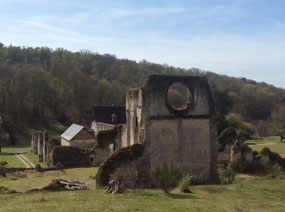
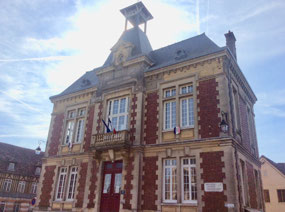
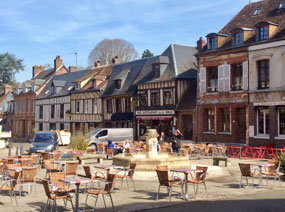
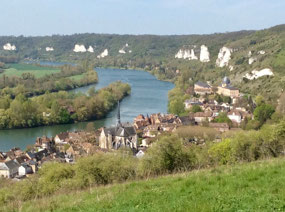
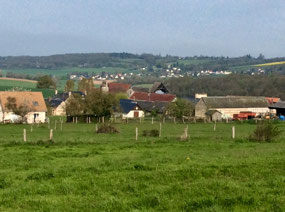
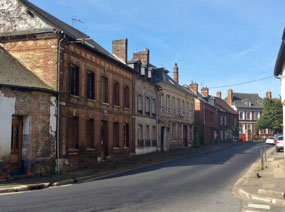
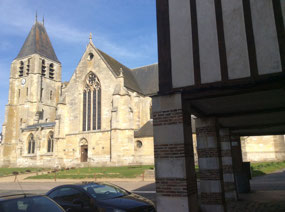

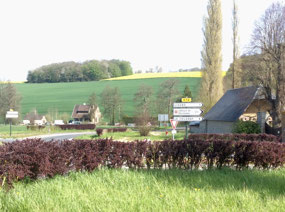








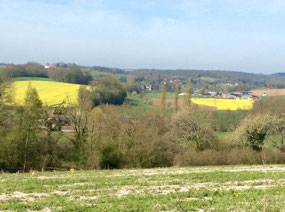
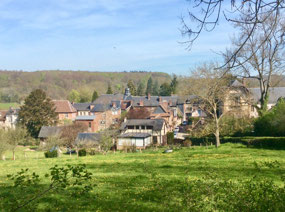
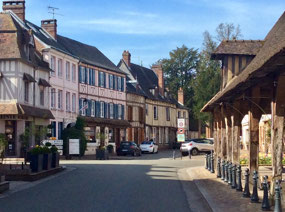
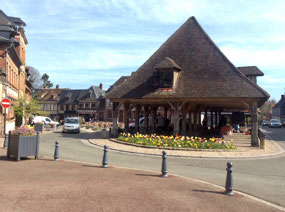
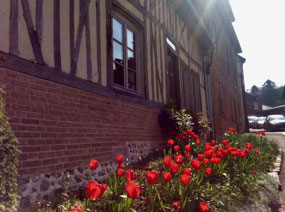
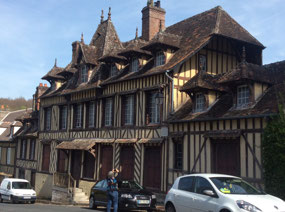
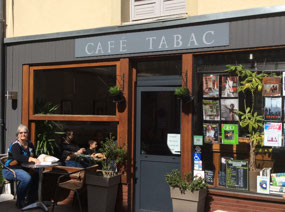
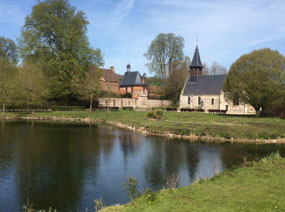
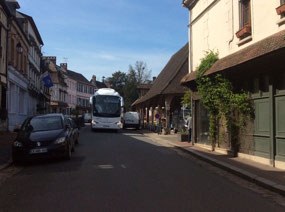
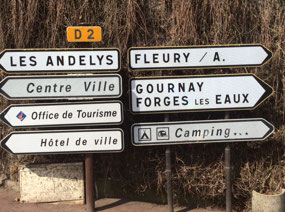
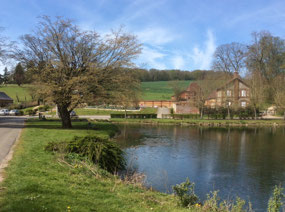



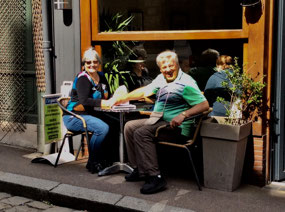
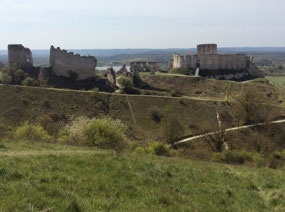
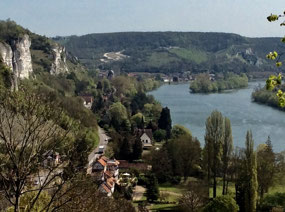
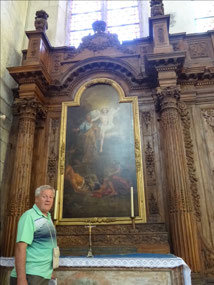
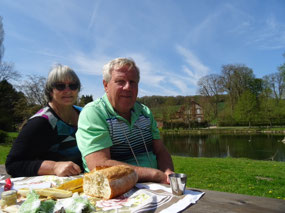
2025-05-23